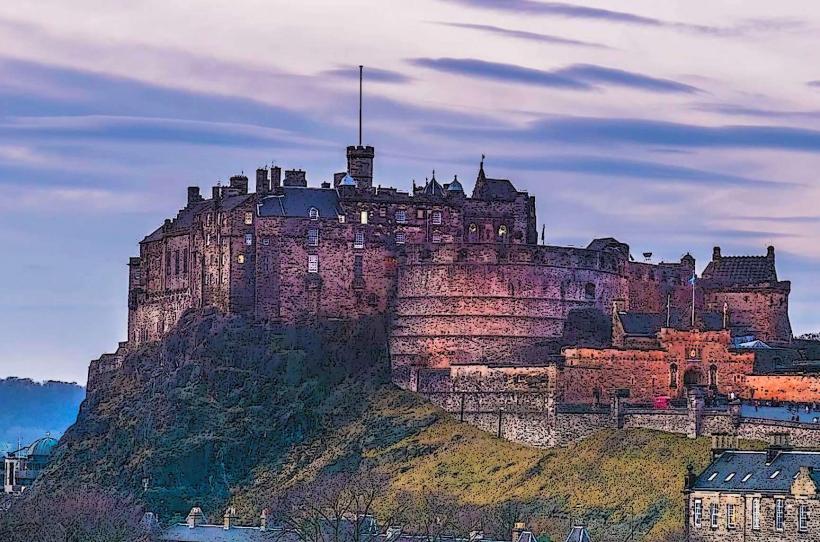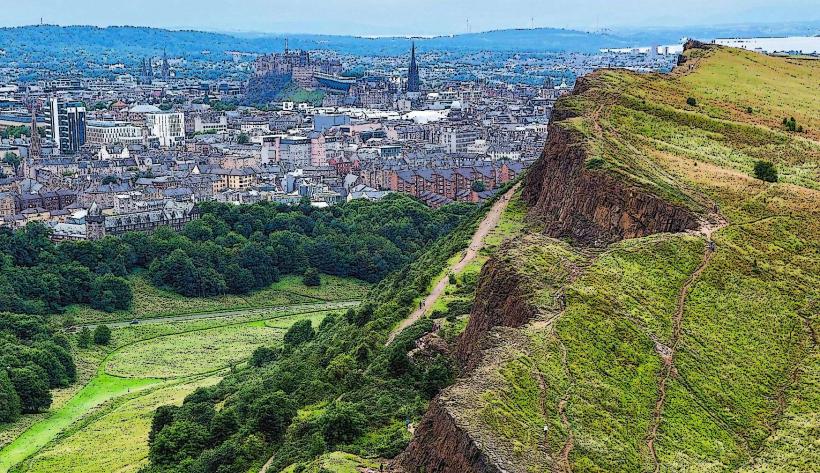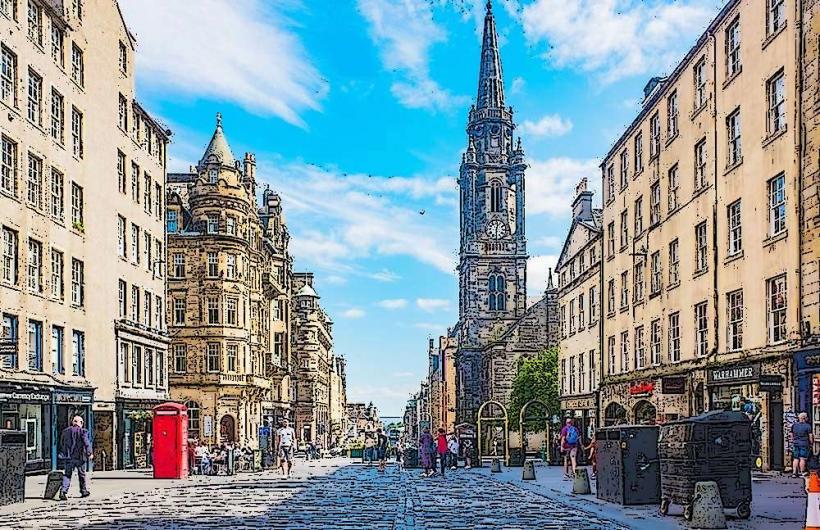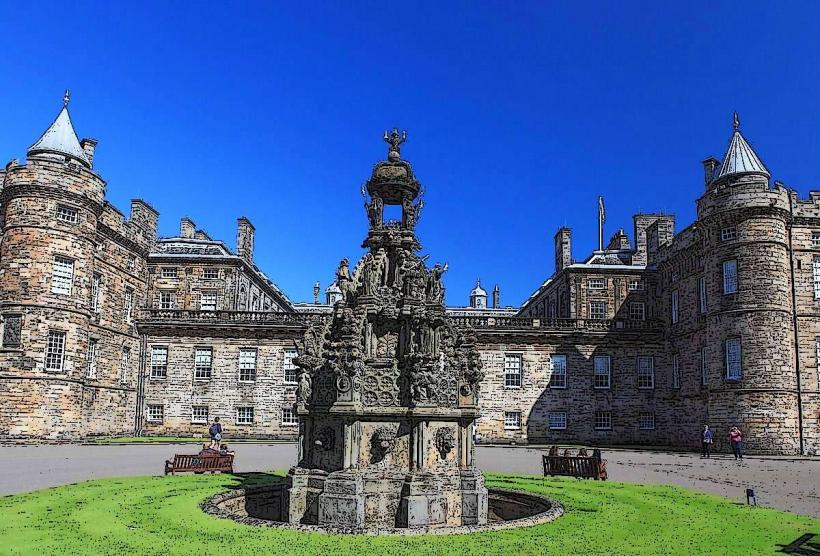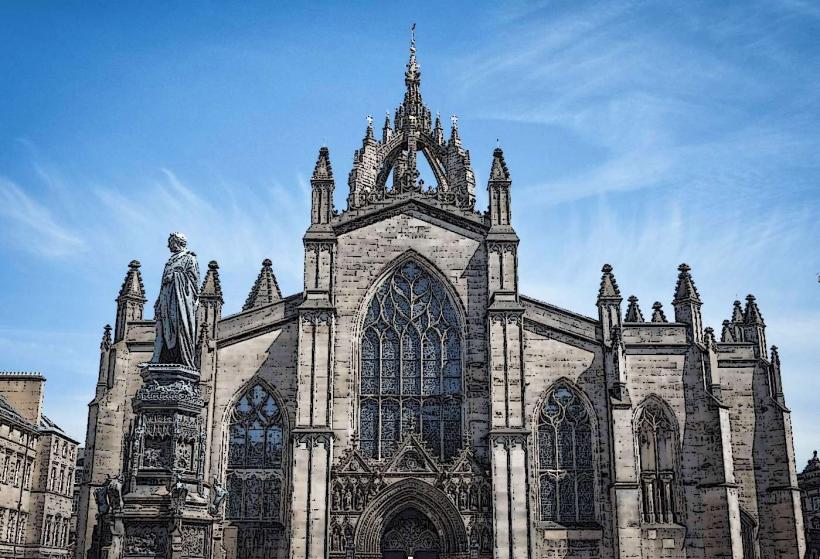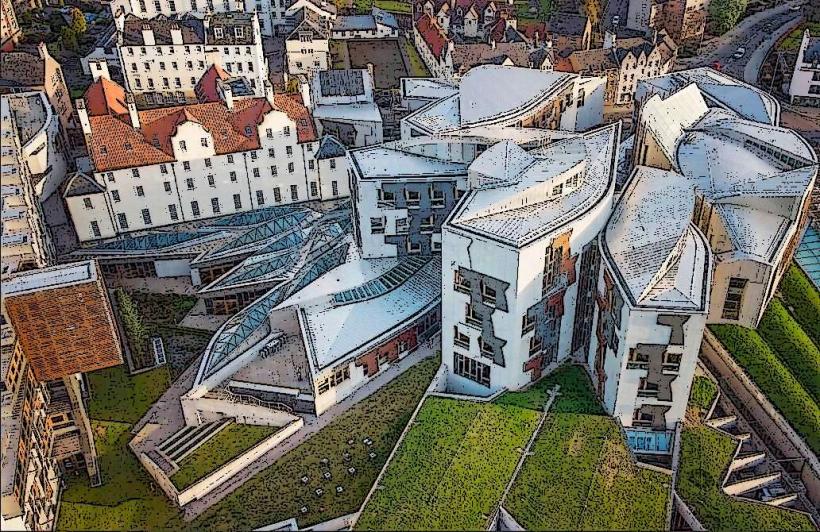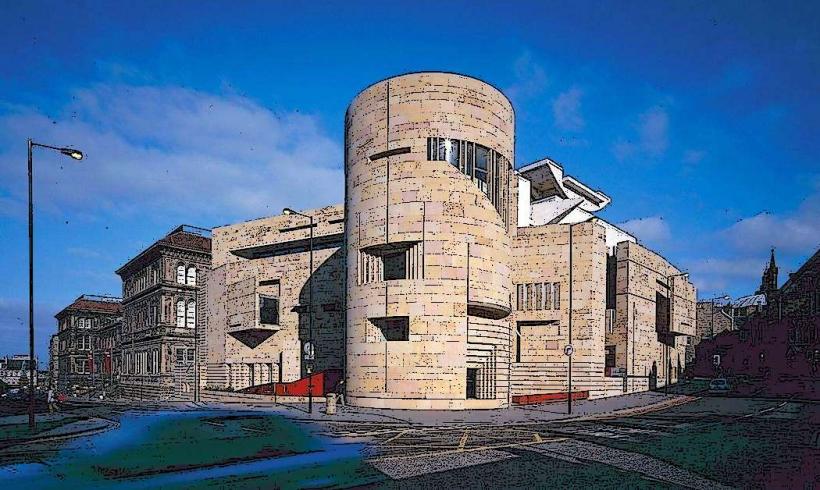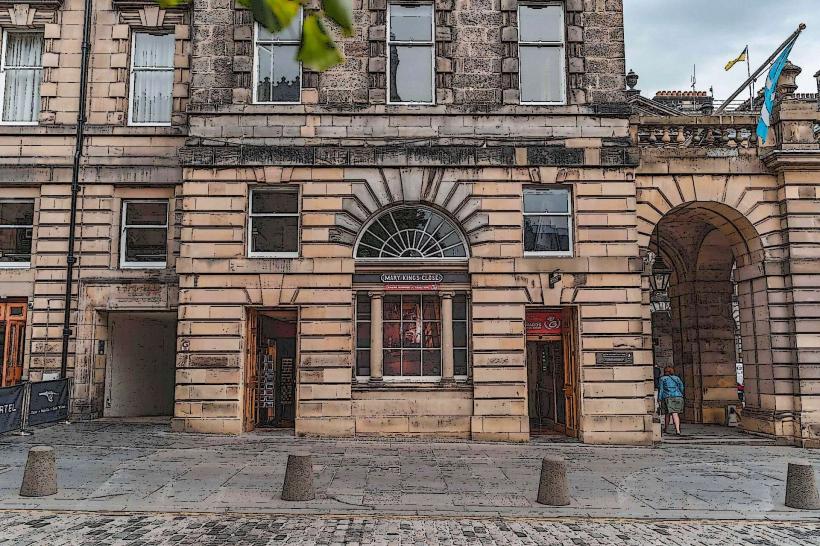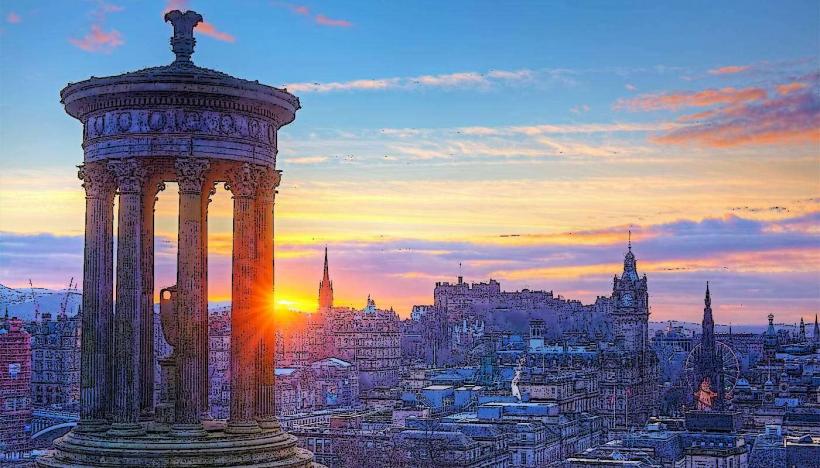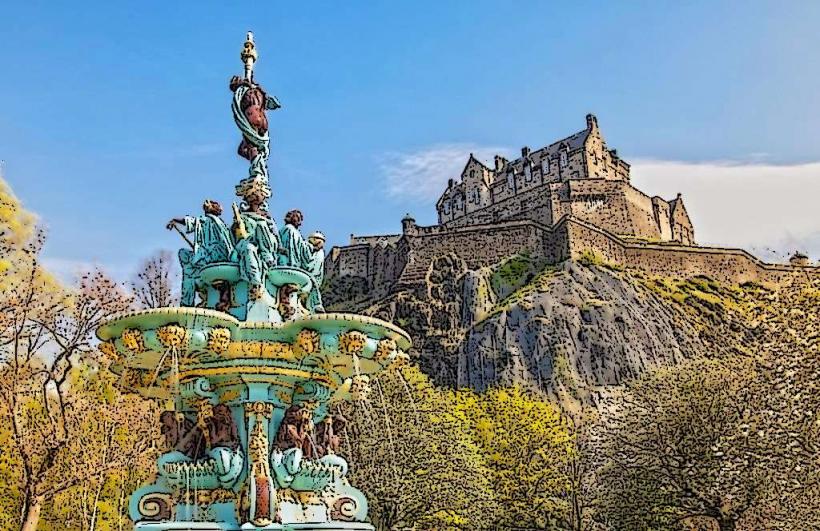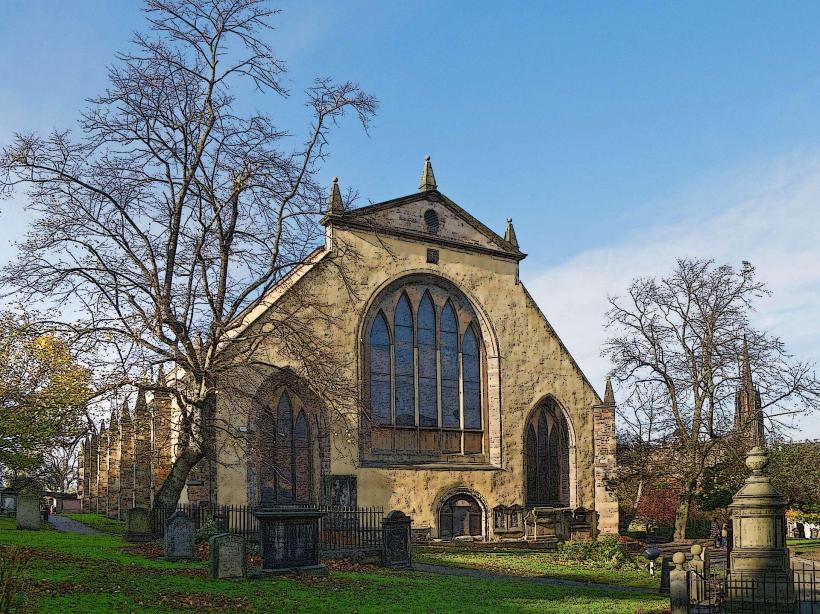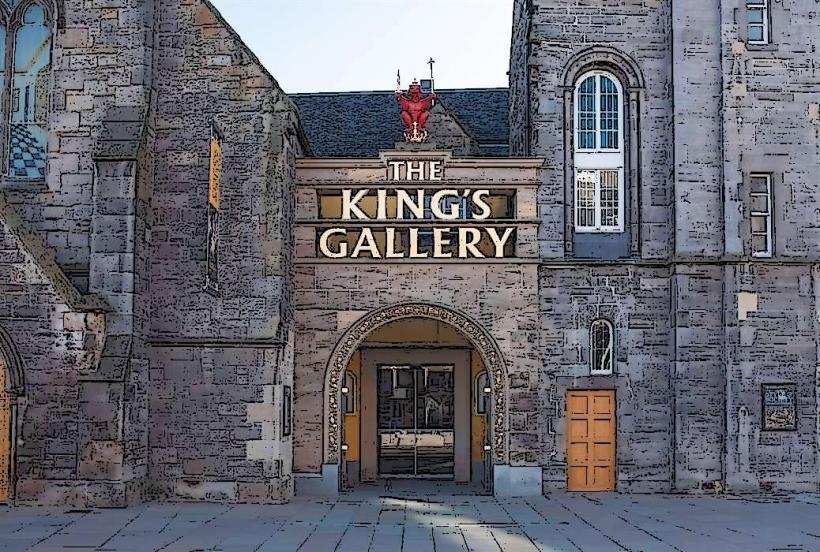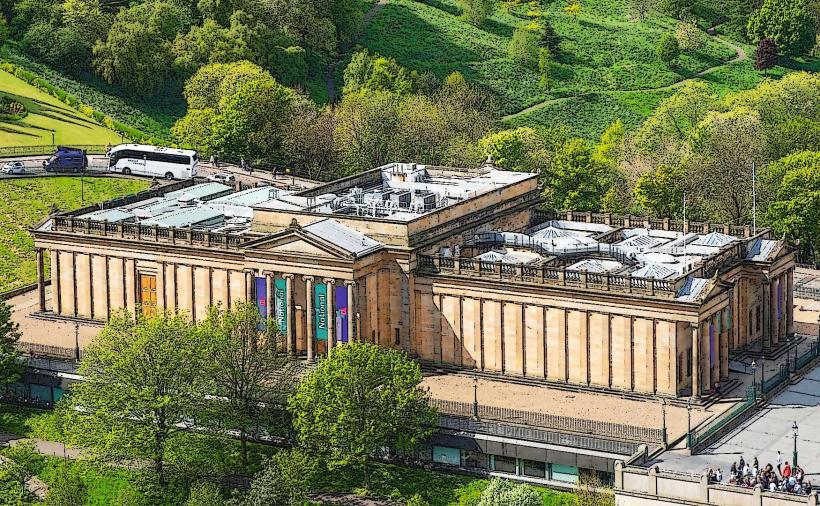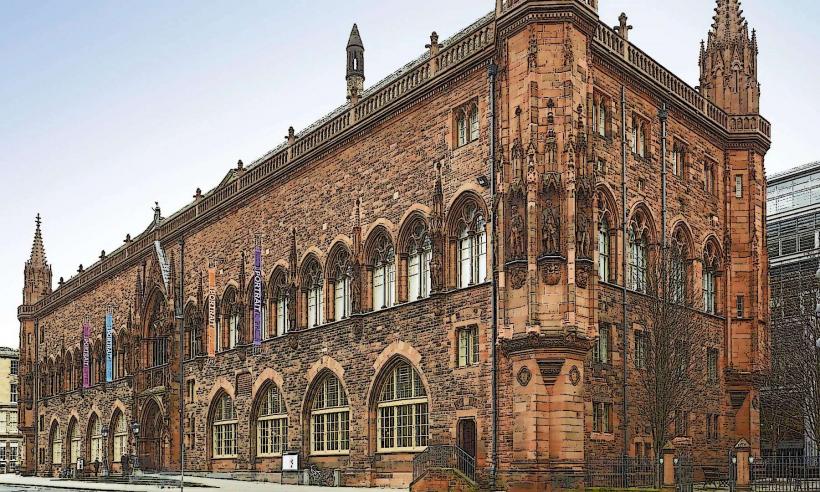Information
Landmark: Palace of HolyroodhouseCity: Edinburgh
Country: United Kingdom
Continent: Europe
The Palace of Holyroodhouse, located at the end of Edinburgh's Royal Mile, is a symbol of Scotland's royal history and remains one of the most important sites in the country. It has been the residence of British monarchs in Scotland for centuries and continues to play a central role in royal ceremonies and events. Here's a more detailed exploration of its history, architecture, and features.
Origins and Historical Significance
- Foundation and Early Years: The Palace of Holyroodhouse was founded in 1128 by King David I, who established the Augustinian Holyrood Abbey on the site. The abbey was built as a place of religious worship and was a center of medieval life in Edinburgh. The name "Holyrood" comes from the Old English "holy rood" (holy cross), reflecting its religious heritage.
- Royal Residence: In the late 15th century, King James IV began using the site as a royal residence. By the 16th century, the building had been expanded and transformed into a more elaborate palace. Over time, it became one of the main residences of Scottish kings and queens.
Architectural Evolution
- Early Modifications: In the 1500s, the palace began to take shape as we know it today. King James V commissioned a major redesign, which included the construction of a new, more modern structure that blended Gothic and Renaissance styles.
- 16th-Century Expansion: The palace underwent significant renovations during the reign of Mary, Queen of Scots, who was crowned in 1542. Mary lived in the palace during her tumultuous years as queen, and it was here that she was involved in the infamous assassination of her secretary, David Rizzio, in 1566.
- 17th and 18th Century Changes: The palace continued to evolve under the Stuart kings. In the 17th century, more formal Baroque features were introduced. However, after the union of the Scottish and English crowns in 1707, the importance of Holyroodhouse as a royal residence began to wane, with London becoming the focal point of the British monarchy.
- 19th and 20th Century Restoration: The Palace was significantly restored in the 19th century, notably under Queen Victoria, who visited Scotland frequently. The restoration work helped return the palace to its original grandeur and solidified its status as the official residence of the British monarch in Scotland.
Key Rooms and Features
The Great Gallery:
The Great Gallery is one of the palace's most famous rooms. Stretching over 30 meters in length, it contains a collection of portraits of Scottish kings and queens. The most prominent figure in these portraits is Mary, Queen of Scots, whose image adorns much of the room. The gallery was also the site of a dramatic historical moment: in 1566, it was here that Mary witnessed the murder of her secretary, David Rizzio, by her husband, Lord Darnley, and his accomplices. The gallery's grandeur, with its intricate ceiling and elaborate decorations, is one of the highlights of the palace.
Mary, Queen of Scots' Chambers:
The chambers used by Mary, Queen of Scots, offer a glimpse into the personal and troubled life of the Scottish monarch. The bedchamber is where she spent many nights, and it is in these rooms that she received some of the most significant visitors of her reign, including her cousin, Queen Elizabeth I of England. Her supper room is especially poignant, as it was the site of Rizzio's assassination. The room is preserved with original 16th-century furniture and objects, providing a rare insight into the royal life of the time.
The State Apartments:
The State Apartments are used by the British royal family during official visits to Scotland. These rooms are elegantly furnished with antique furniture, tapestries, and art, offering a luxurious environment for royal functions. The apartments include the Throne Room, where official ceremonies take place, and the Drawing Room, used for receptions and meetings. These rooms are designed to reflect the power and prestige of the monarchy, featuring artwork and artifacts that tell the story of British royalty and Scottish heritage.
The Gardens:
The palace gardens are a peaceful and beautiful space that offers stunning views of the surrounding area, including Arthur’s Seat, a dormant volcano that towers over the city. The gardens, which are open to the public at certain times of the year, are beautifully landscaped and offer a serene retreat from the hustle and bustle of Edinburgh. The gardens are also the venue for the Queen's Garden Party, an event that has become a tradition for the royal family.
The Role of the Palace in Modern Times
- Royal Visits: The Palace of Holyroodhouse remains the official residence of the British monarch in Scotland. Every year, the reigning monarch spends a week at Holyroodhouse, conducting royal duties, meeting with Scottish political leaders, and hosting various ceremonies. It is particularly significant during the "Royal Week" in Scotland, when the Queen or King carries out a series of engagements in Scotland.
- Public Access: Today, the Palace is a popular tourist destination. Visitors can explore its public rooms, including the Great Gallery and Mary’s chambers, and learn about the rich history of the palace. The gardens are also open to the public, providing a chance to enjoy the tranquil surroundings of this historical site.
Notable Historical Events
- Mary, Queen of Scots: The palace is most famous for its association with Mary, Queen of Scots. Her reign was marked by political intrigue, personal tragedy, and intense rivalry with Elizabeth I. The palace was both a place of refuge and a site of dramatic events, including the aforementioned murder of her secretary, David Rizzio.
- Bonnie Prince Charlie: During the Jacobite rising of 1745, the Palace of Holyroodhouse was temporarily occupied by Charles Edward Stuart, known as Bonnie Prince Charlie. He made the palace his headquarters during his brief attempt to claim the throne of Britain for the House of Stuart. After his defeat at the Battle of Culloden in 1746, Bonnie Prince Charlie was forced to flee, marking the end of the Jacobite cause.
Conclusion
The Palace of Holyroodhouse is not just a royal residence but a historic monument to Scotland’s past, symbolizing the country’s long and often turbulent relationship with the British monarchy. From its medieval origins as a monastery to its status today as a working royal residence, the palace continues to be a key site in both Scotland’s royal history and its cultural heritage. It stands as a reminder of the enduring legacy of the monarchy and its deep ties to the Scottish people.

